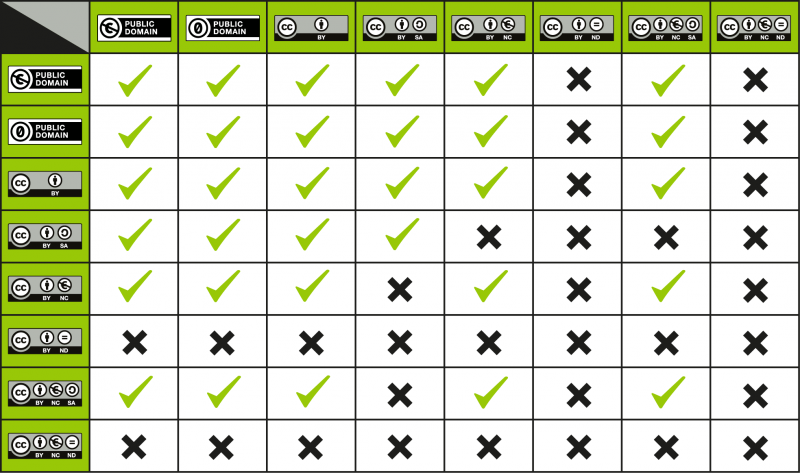
Reusing works that have a Creative Commons license ALWAYS requires attribution.
This attribution statement should be provided as a caption or in-text citation where applicable (e.g. images, videos, small portions of text), or in a references list/bibliography (e.g. videos, large segments of text, presentations, etc.).
All Attribution Statements should include the following 5 elements if possible:
1) Title of the original work
2) Link to the original work (typically the Title is Hyperlinked)
3) Creator of the original work
4) Creative Commons License of the original work
5) Link to the Creative Commons License (typically the License is Hyperlinked)
Example: "CC License Compatibility Chart" created by Kennisland, CC0
Learn how to attribute CC-licensed works by following these best practices.

"Red and blue" by Quinn Dombrowski, CC BY-SA 2.0


Because of their open licensing, OERs can be modified and combined (remixed) to create new materials; however, when combining two CC-Licensed works to create something new, faculty must be careful to abide by the terms of both works' licenses. The chart below indicates which licenses are compatible for remixing and which are not.

"CC License Compatibility Chart" created by Kennisland, CC0
*Please note that when combining two CC-Licensed works with compatible licenses, the license you select for your newly created work must cover the terms of both licensed works used. Typically this means using the most restrictive license of the two works.
Note that these considerations are only necessary when creating a new work that will be exist under a single license (see Remixes).
These considerations are not necessary when simply picking and choosing resources to use in various modules within a D2L course.

A Member of Minnesota State